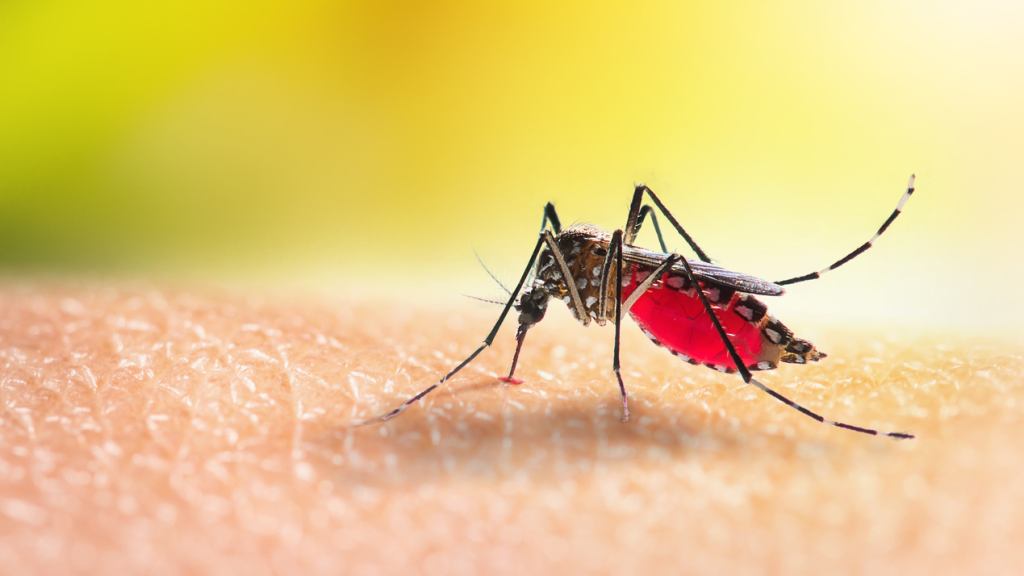
iStockphoto / panom
If you have ever been in a crowd of people and felt like you are the only one being targeted by mosquitoes, you are not alone. In fact, I’m right there with you. I could be surrounded by 50 people and it feels like the mosquitoes fly past every person just to get to me.
If all of this sounds familiar, you are not alone. And you are not losing your mind. Mosquitoes are seeking you out but it’s not (necessarily) because of your blood type or skin color.
Scientists have now determined that mosquitoes DO, in fact, bite some people more than others and they’ve figured out why
A research paper published in the journal Cell on Tuesday, October 18th titled ‘Differential mosquito attraction to humans is associated with skin-derived carboxylic acid levels’ has really pulled back the curtain on this phenomenon. By running a series of experiments to test ‘relative attractiveness’ to the mosquitoes they were able to definitively say that skeeters prefer some people to others.
From there, they were able to determine why mosquitos are more attracted to one person than his/her neighbor. What they found is it’s tied to ‘skin-derived carboxylic acid levels’. Firstly, here is how the experiment was undertaken:
We reasoned that in a real-world situation, mosquitoes would choose among multiple different humans in a local area, such that the absolute attractiveness of a single human would not necessarily predict their attractiveness relative to another person. To systematically determine the relative attractiveness of these 8 humans to mosquitoes, we performed a round-robin style “tournament,” competing nylons from all possible subject pairings from this group of 8 subjects, for a total of 28 separate competitions using the two-choice olfactometer assay (Figure 1E). We sampled each pair of humans on 6 separate days over a period of several months (558 trials, performed over 42 experimental days). Among 28 subject pairs tested, we found 13 pairs for which mosquitoes significantly preferred one subject’s odor over the other (Figure 1E).
What they found was certain ‘subjects’ or participants in the experiment attracted mosquitoes at a much higher rate than their peers. But they didn’t stop there. After finding that ‘highly mosquito-attracting humans produced more abundant carboxylic acids on their skin’ they sought to confirm those findings and ran ANOTHER experiment with 56 new human subjects.
Apologies if this is making your skin crawl and if you suddenly find yourself itching while reading all of this.
After running the second set of experiments with 56 new subjects, the researchers determined ‘differential attractiveness of individual humans to mosquitoes is stable over many months and is associated with the abundance of skin-associated carboxylic acids.’
Interestingly, they tried to hone in on which of the skin-associated carboxylic acids might be causing certain humans to get bitten more than others but what they found is:
Highly attractive subjects produced significantly higher levels of three carboxylic acids—pentadecanoic, heptadecanoic, and nonadecanoic acids—as well as 10 unidentified compounds in this same chemical class. The specific blend of these and other carboxylic acids varied between different high attractive subjects. Therefore, there may be more than one way for a person to be highly attractive to mosquitoes.
So, basically, if you are bitten by mosquitoes more than everyone around you it’s because your body emits some combination of those 13 compounds in higher quantities. It’s unclear if one, more, or all of them in combination cause the spike in skeeter bites but it is out of our control to change those scents. Meaning that those of us who get bitten by mosquitoes a lot are just destined to be this way forever.
The best thing you can do is cover up your skin with long sleeves and a hat. Wear bug spray if you’re into that. Avoid boggy/swampy areas. And hope for the best!
For more on this study, you can read it in full right here in the journal Cell.
It's always the state of Florida up to something… https://t.co/FinVYKTprE
— BroBible (@BroBible) March 21, 2021